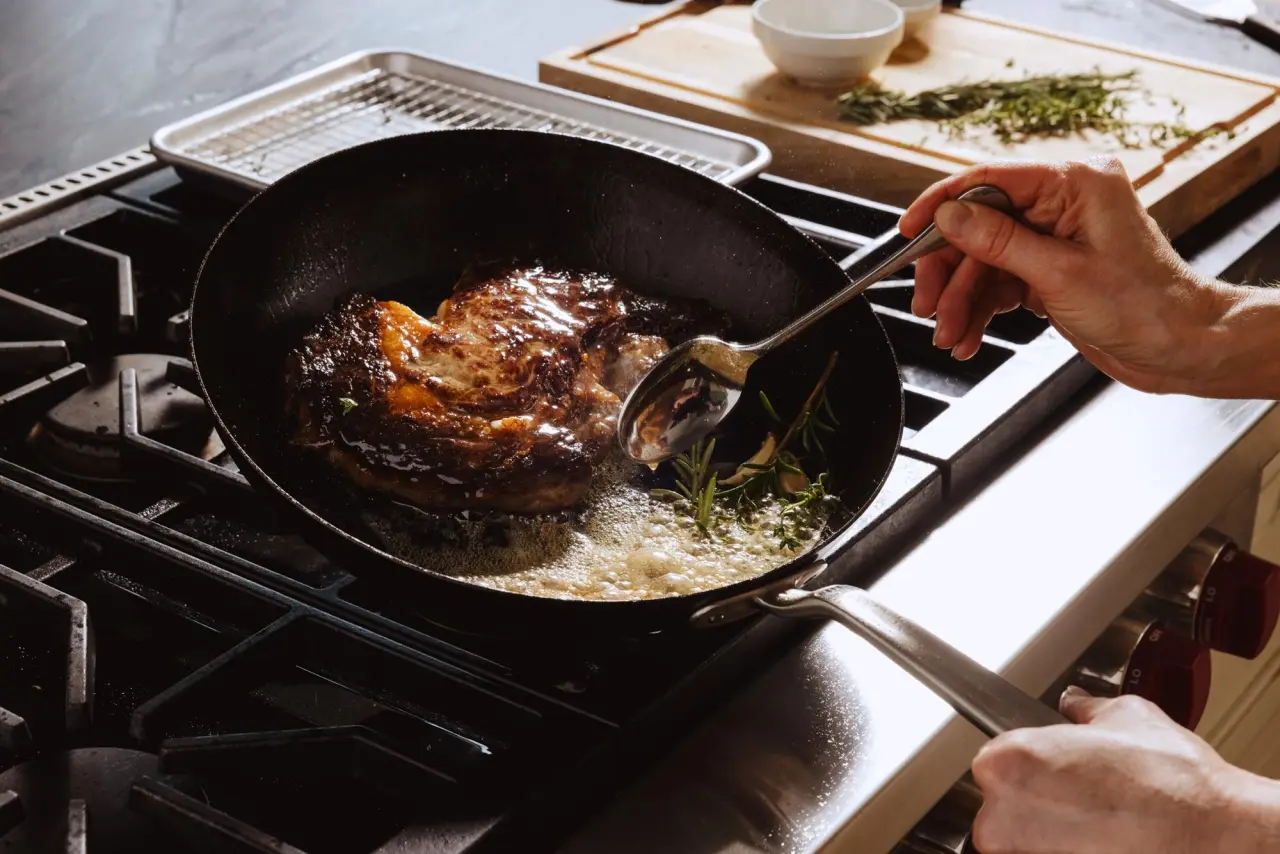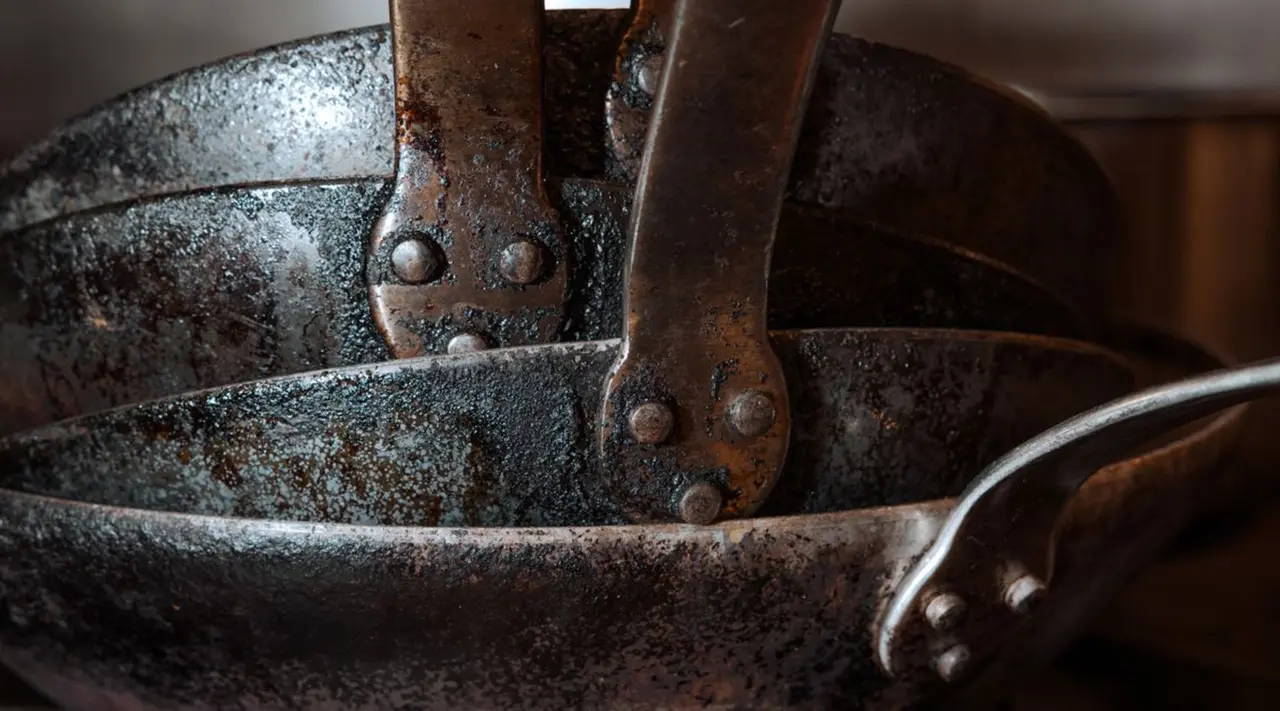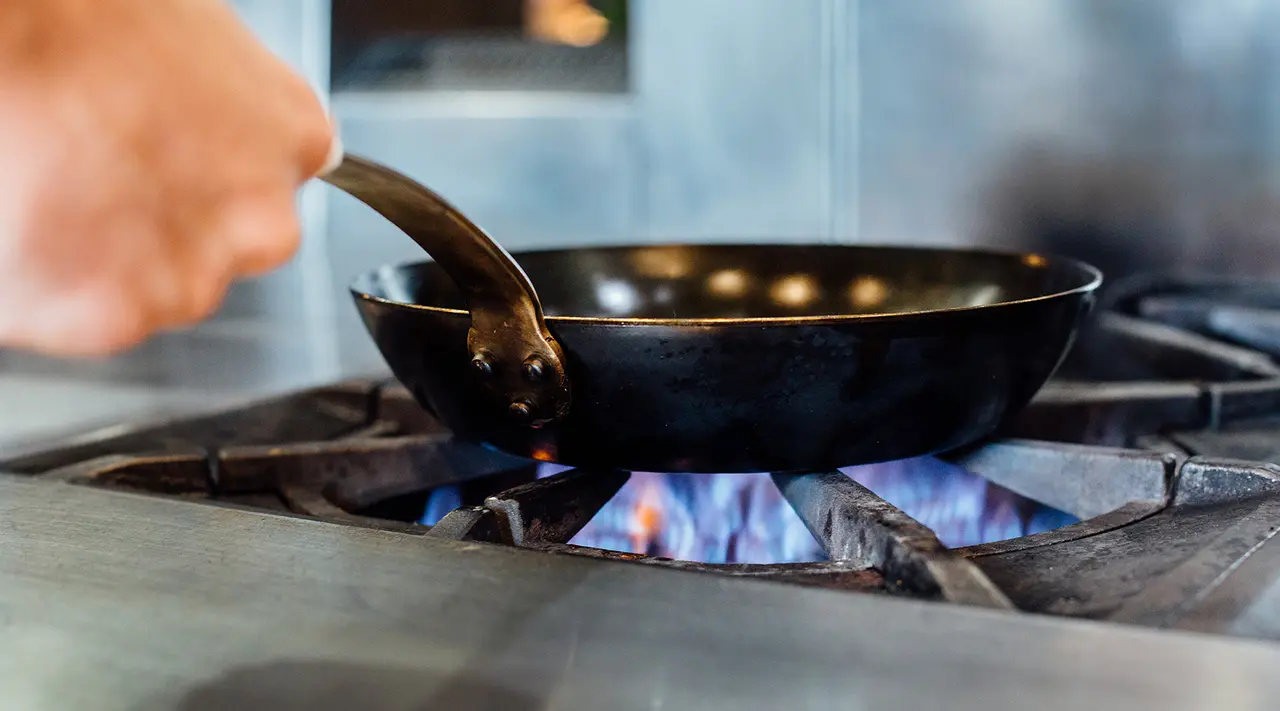It’s hard to beat a preseasoned carbon steel wok: this versatile, durable tool is hard-wearing, high heat-tolerant, and naturally non stick straight out of the box, so you can dive straight into cooking without spending your precious time on seasoning.
But even with this initial step taken care of, your preseasoned wok still needs a little TLC. To help you out—and to celebrate the launch of our Preseasoned Carbon Steel Wok—we’ve created a detailed, step-by-step guide to wok maintenance. From cleaning and storage to stripping and reseasoning, here’s how to keep your wok flawlessly non-stick, rust-free, and ready to use any time you need it.
What Does Preseasoned Mean?

While seasoning is hardly a complicated process, it takes time (and a bit of homework) to learn how to do it right. That’s why many manufacturers—us included—preseason their carbon steel woks by applying a layer or two of seasoning prior to shipping, saving home cooks the extra time and effort required to season their wok. We use a proprietary blend of shea and coconut oil, but the exact blend depends on the manufacturer.
As a added bonus, preseasoning also keeps pans protected from rust and other damage while in transit.
Why Proper Seasoning and Maintenance Matter

While preseasoned woks and pieces of carbon steel cookware are a wonderful modern convenience, they still need to be properly cleaned and cared for in order to maintain their non stick properties. This includes cooking with your pan regularly; using the right cleaning materials; storing it properly; and stripping and reseasoning as needed.
How to Maintain a Preseasoned Carbon Steel Wok

Your preseasoned wok can be easily stripped if you’re not careful, but here’s how to keep it safe to avoid that.
1. Cooking With It Regularly
- One of the easiest ways to take care of your wok—or any piece of carbon steel, really— is regular use to help build up the seasoning.
- Cooking high-fat foods like pork belly, bacon, or chicken thighs will help develop seasoning even faster.
2. Cleaning Without Stripping the Seasoning
- To protect the seasoning, always hand wash your carbon steel wok and avoid the dishwasher at all costs.
- Let your wok cool then wipe remaining oil and food residue carefully with a paper towel—if your wok was just used for a quick stir-fry, this may be enough to clean it.
- If you need more in-depth cleaning, use warm water and a soft sponge (or stiff-bristled brush brush) to clean, and avoid harsh scrubbers like steel wool.
- For stubborn residue or stains, gently scrub with salt or a chainmail scrubber.
3. Drying and Oiling After Each Use
- Always dry immediately to prevent rust. After wiping down with a dish towel, we like to put the wok back on the stove on low to make sure it gets fully dry.
- Apply a thin layer of oil after each use to maintain the protective coating.
What to Do If Seasoning Wears Down
If patches of your wok are starting to feel sticky to the touch, or you notice food starting to stick more easily than usual, then your wok may be in need of reseasoning.
Quick Reseasoning Method
- Make sure your wok is thoroughly clean and dry: to get rid of any remaining moisture, place it on the burner over low heat for a few minutes.
- Use a paper towel to apply a very thin (almost invisible) layer of high-smoke-point oil, such as grapeseed or flaxseed, to the surface of the pan.
- Heat wok on the stove over medium-high; after a few minutes, turn heat up to high.
- As the wok is heating, wipe away any beads of excess oil that may appear on the surface.
- Once wok starts to smoke, let sit on the burner for a few more minutes to build up the seasoning, then remove from heat.
- Allow wok to fully cool before starting to cook.
Why Choose a Preseasoned Carbon Steel Wok?

Being able to bypass the initial seasoning step saves time and the hassle of getting it perfect. If you’re new to carbon steel or haven’t seasoned anything before, this is a great way to make sure you’re starting off on the right foot to build up carbon steel’s signature non stick patina. This ensures professional-level performance from day one, and takes out the often-daunting guesswork of knowing if your first seasoning will actually protect your pan.
Ready to Cook?
While wok cooking isn’t exactly a no-brainer, our preseasoned Carbon Steel Wok can help take the guesswork out of stir-frying, deep-frying, and other popular wok methods. Prepping your mise-en-place, however? That’s up to you.






















